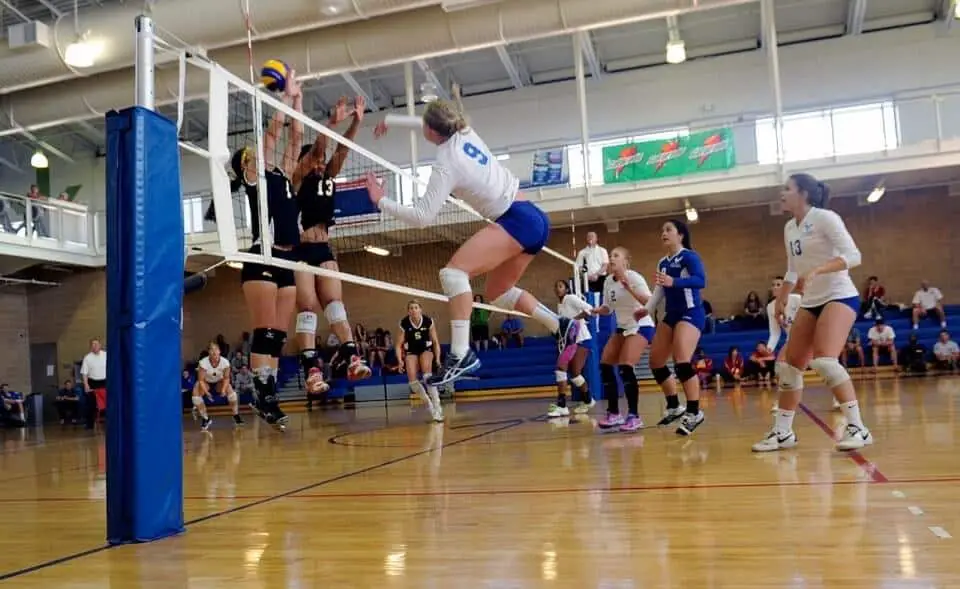Table of Contents
Volleyball Rotations How Do They Work?
Don’t worry if you are struggling with rotations it’s something that every single person who has ever started playing indoor volleyball gets confused by and will continue to get confused by for the rest of time. It doesn’t matter if you are a complete beginner or seasoned pro rotations can still be tricky to remember and get the hang of.
Admittedly the more you play and the more familiar you become with the rotations it’s not so much you don’t understand rotations or know how rotations work in indoor volleyball, you sometimes just simply forget where you are meant to be.
With that being said they are not nearly as daunting as they first appear, in this article I am hoping to explain exactly how you rotate in volleyball and why we use rotations.
I am also going to put together some rotation cards that you can request and print out to help your team if they are struggling or just starting to utilise rotations. To get them simply put your email in the sidebar and the rotation cards will be emailed directly to you (Coming soon)
Why Do We Rotate in Indoor Volleyball
Before we get into how to rotate in indoor volleyball i feel it may be easier if I first explain why we rotate in volleyball.
When playing indoor volleyball you would normally want your middle hitter obviously hitting through the middle, your outside hitter attacking through 4 position (or outside position) and your opposite player attacking the ball through the 2 position (opposite wing).
Regarding the back court this can change slightly depending on teams personal preferences and whether or not you as a team use a libero. If you team is not using a libero you may want your other outside hitter to play at the 6 position the reason for this is because the pipe hitting option can be very effective and generally the outside hitter will be the best person in the back row to perform this hit. The other reason is they are often very skilled at passing so they have a good chance of being involved in receiving whether the ball is set to the opposition’s opposite or outside hitter. You also want your opposite player to be at position 1 so they can still be used to attack from the 10 position. This leaves the middle to defend at position at position 5.
However in indoor volleyball you must rotate round position as a team every time you win a point, because of this your starting position not be the position in which you want to play during the rally.
This is one reason why we rotate positions after the ball has been served, it allows us as a team to have each player in their strongest position at all times.
Now you have a better understanding as to why we want to rotate in volleyball let’s get into how you rotate
Indoor Volleyball Rotations Explained
The thing that makes rotations confusing isn’t actually the fact that you need to rotate as you go to the same point each time when you are in the back row and you go to the same point each time when your in the front row. So with that being said where should you rotate to.
Front Row
The outside hitter will always want to rotate to the 4 position ready to attack the ball
The opposite player will always want to rotate to the 2 position again ready to attack the ball or alternatively ready to set the ball if the setter takes the first pass.
The middle hitter unsurprisingly will always want to rotate to the middle spot or the 3 position.
The setter much like the opposite will want to rotate to the 2 spot, ideally you want your team to pass the ball to 2.5 so you can set a quick middle, a set to the outside player in the 4 position or the opposite player at the 10 position.
Back Row
Now the back row gets a little more complicated, as I said before it can be different depending on a teams personal preference, for example maybe a teams strongest hitter is their middle so they may choose to play their middle player at 6 for the pipe attack. Another thing that would cause the below to change is if a team is playing a libero, with that being said I am going to stick with the traditional rotations that I see the most.
The outside hitter in the back row will rotate to the 6 position to give them the best chance of being involved in receiving and also offers the setter and the team another hitting option.
The opposite player will go to the 1 spot ready to receive the hard driven line shots, the tips over the block, the hard driven cross ball whilst remaining another attacking option by hitting from the 10 position.
The Middle player will often go to the 5 spot, again they will be responsible for defending the hard line hit, the tip over the block and occasionally the hard cross hit. The middle player will not often have much of a hitting role however they can hit what is referred to as a 15 which is similar to the 10 hit just on the opposite side.
So as I said before the difficulty that comes with rotating isn’t actually from the rotating part of the play it often comes with how a team set ups (or stacks) when waiting to receive a serve.
Starting positions and rotations when receiving a serve
To break this down in more detail I will use the below diagrams to show the rotations. To keep it clear and easy to understand I am going to put a position card with the numbers below. To save me writing out where each player should be for each different serve receive I am simply going to state what position the setter is currently located at so please be sure to rotate each player round one position depending on where the setters location is.
Insert volleyball positions image
To keep things simple I am going to start with setter in his natural setting position and place them at the 2 position.
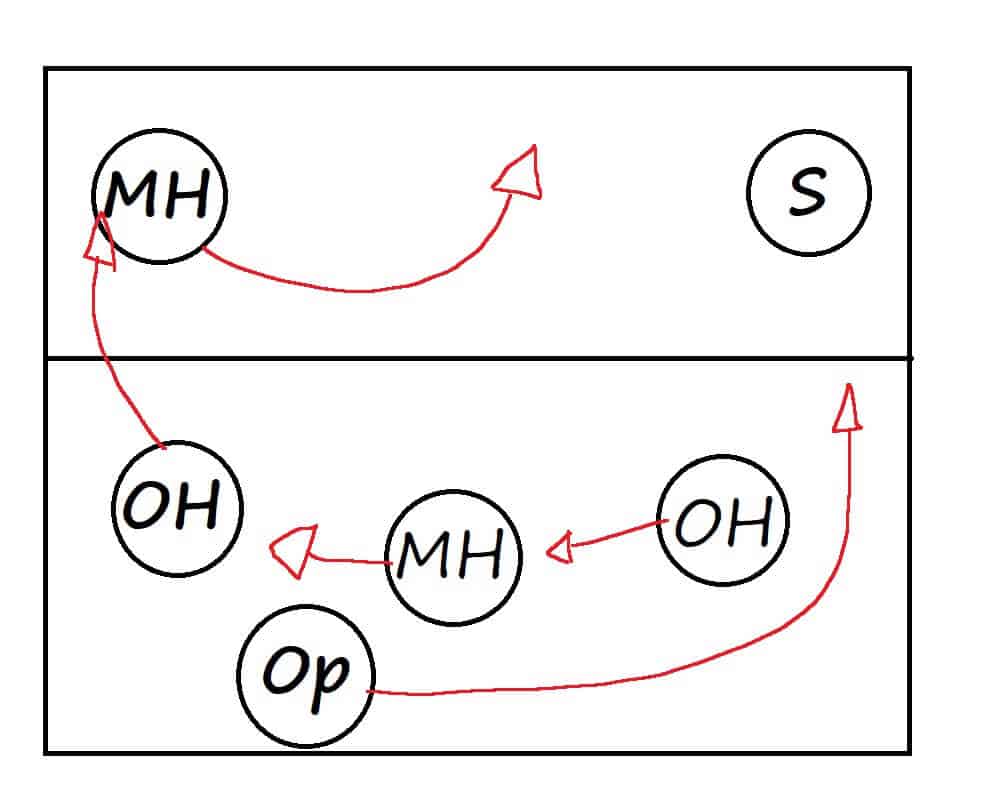
Rotation positions if the setter is at the 1 Position
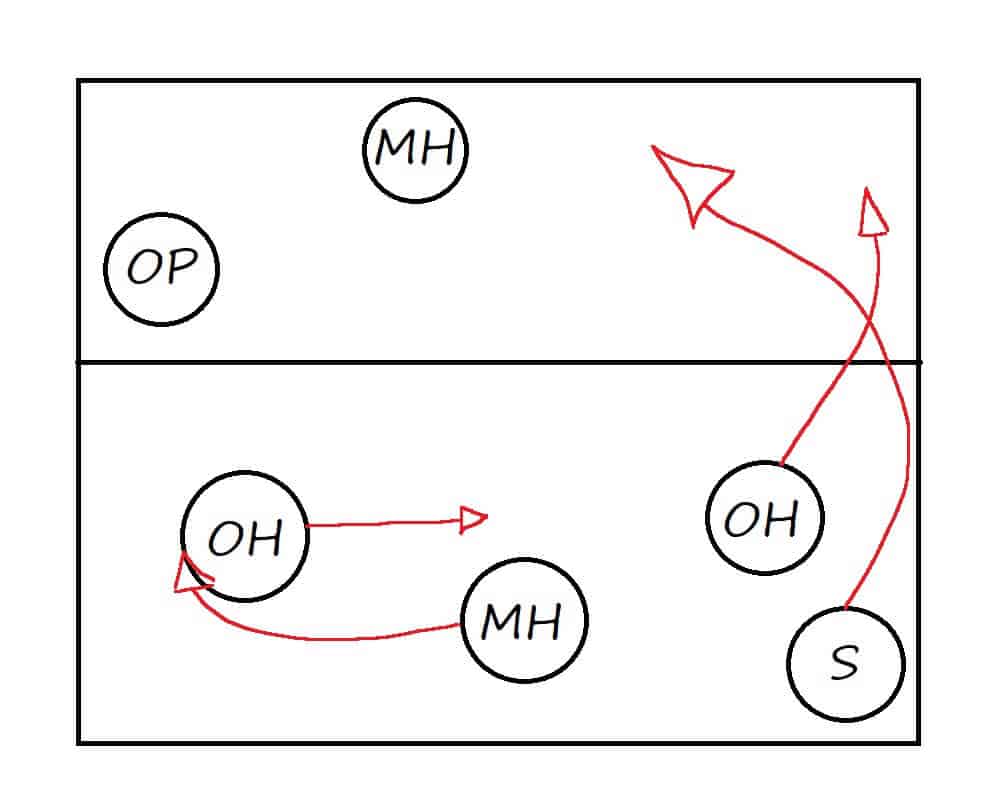
Rotation positions if the setter is at the 6 Position
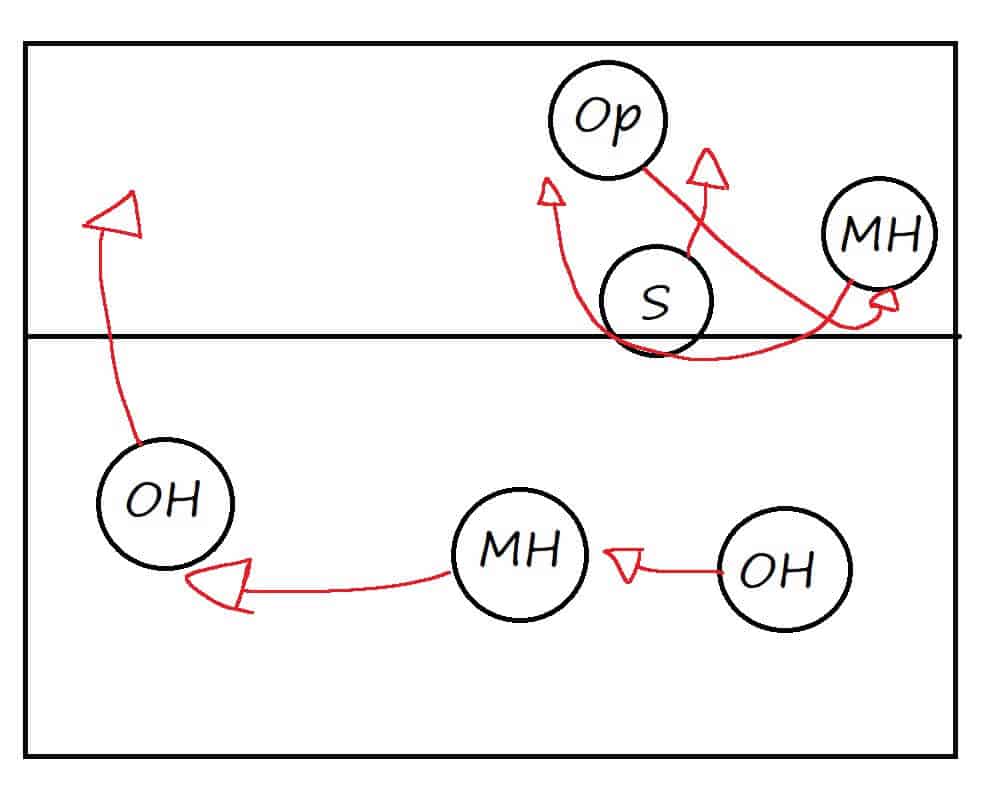
Rotation positions if the setter is at the 5 Position

Rotation positions if setter is at the 4 position
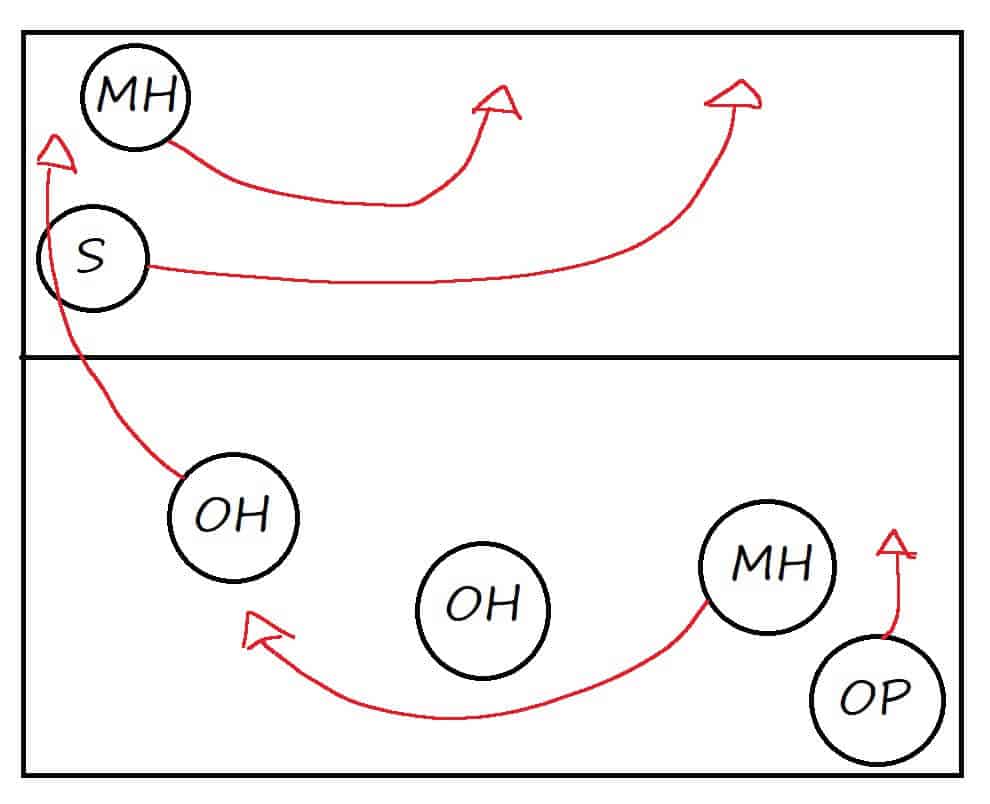
Rotation positions if setter is at the 3 position
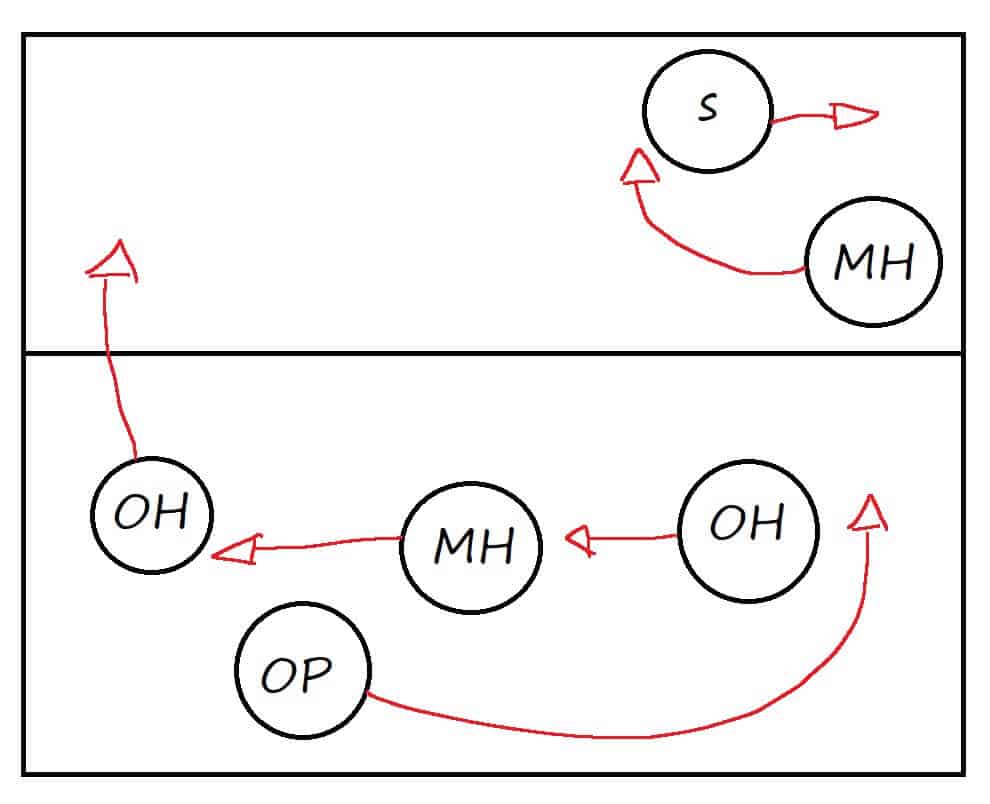
Now I get the arrows may look a bit daunting but I promise you its not as tricky as it looks. The easiest way ro remember where you should start is by making a mental note of how you follow round the court.

